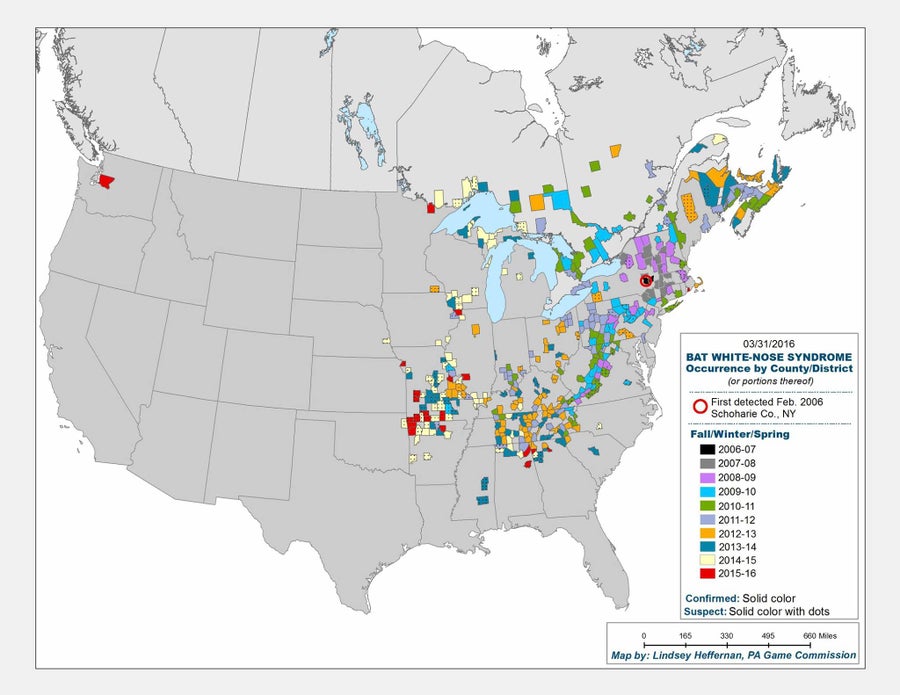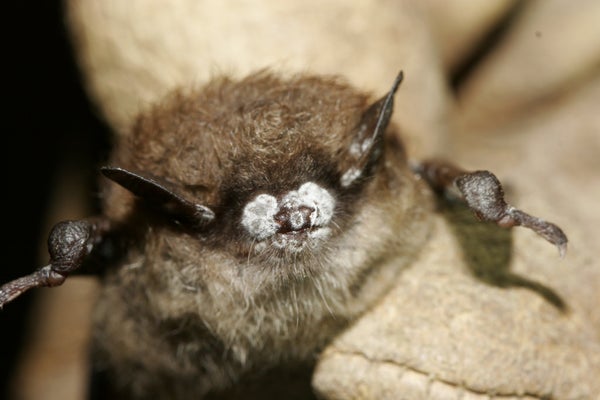This article was published in Scientific American’s former blog network and reflects the views of the author, not necessarily those of Scientific American
The discovery of a sick bat about 50 miles east of Seattle has revealed startling news: the fungus that has killed millions of bats in the eastern part of the country has leapt over the Rockies and arrived more than 2,000 kilometers to the west in Washington State.
The fungus, Pseudogymnoascus destructans, causes a usually fatal condition called white-nose syndrome, named after the fuzzy white growth that often appears on infected bats’ snouts. The fungus damages bats’ skin and wing tissues and interferes with their ability to hibernate. Affected bat colonies often experience mortality rates of 99 percent.
The fungus first turned up in 2006 and has since been blamed for the deaths of at least 6 million bats (that number hasn’t been updated since 2014, so it’s probably much higher by now). Its appearance in Washington came concurrently with its first observation in Rhode Island. You can follow its spread in this map released by the U.S. Fish and Wildlife Service:
On supporting science journalism
If you're enjoying this article, consider supporting our award-winning journalism by subscribing. By purchasing a subscription you are helping to ensure the future of impactful stories about the discoveries and ideas shaping our world today.

It’s unclear how the fungus spread to Washington, but experts have noted that it may be transmitted from cave to cave by traveling spelunkers. The FWS recently issued recommendations for anyone accessing subterranean bat roots in order to minimize the spread of the disease.
Previously in Extinction Countdown:
